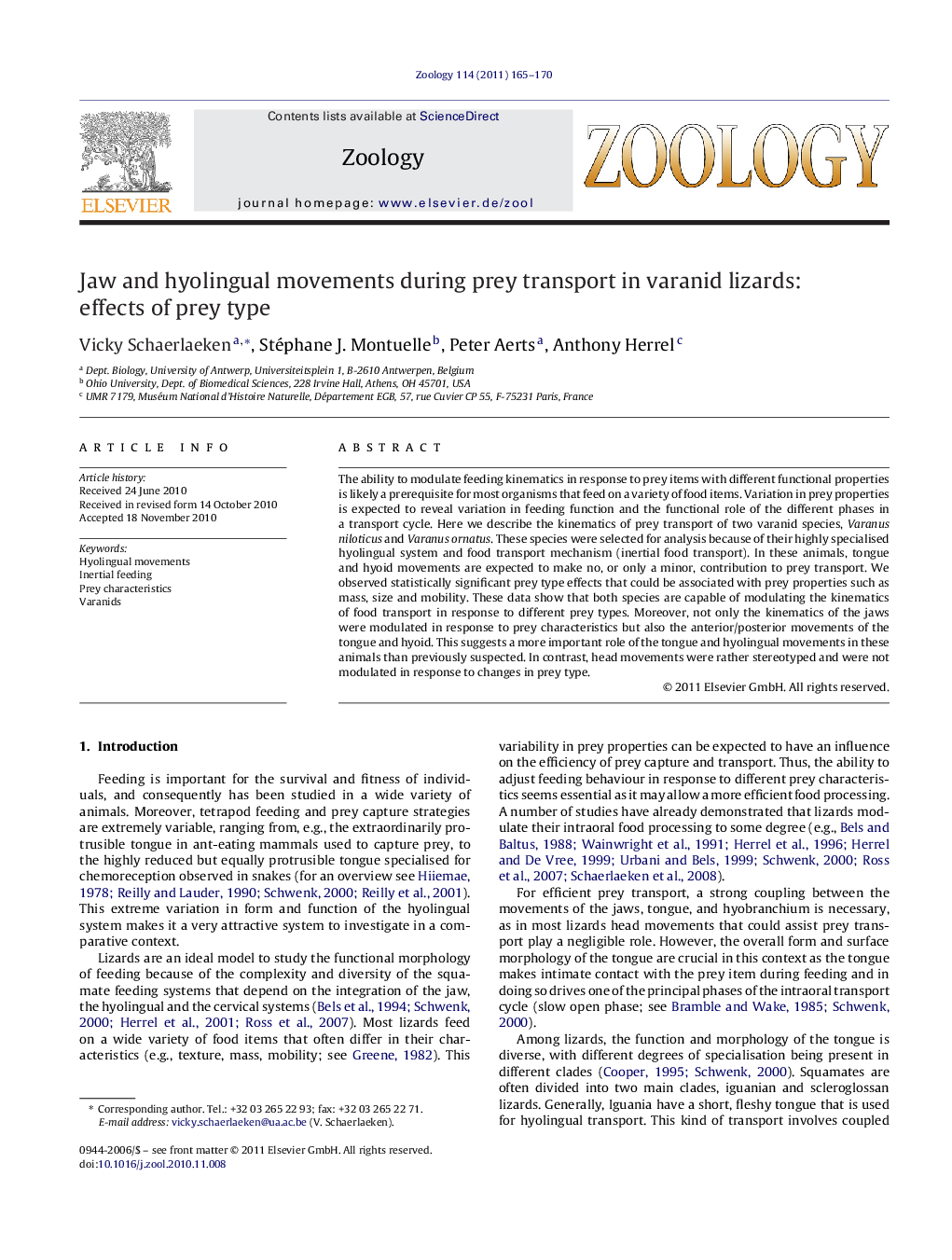| Article ID | Journal | Published Year | Pages | File Type |
|---|---|---|---|---|
| 2791101 | Zoology | 2011 | 6 Pages |
The ability to modulate feeding kinematics in response to prey items with different functional properties is likely a prerequisite for most organisms that feed on a variety of food items. Variation in prey properties is expected to reveal variation in feeding function and the functional role of the different phases in a transport cycle. Here we describe the kinematics of prey transport of two varanid species, Varanus niloticus and Varanus ornatus. These species were selected for analysis because of their highly specialised hyolingual system and food transport mechanism (inertial food transport). In these animals, tongue and hyoid movements are expected to make no, or only a minor, contribution to prey transport. We observed statistically significant prey type effects that could be associated with prey properties such as mass, size and mobility. These data show that both species are capable of modulating the kinematics of food transport in response to different prey types. Moreover, not only the kinematics of the jaws were modulated in response to prey characteristics but also the anterior/posterior movements of the tongue and hyoid. This suggests a more important role of the tongue and hyolingual movements in these animals than previously suspected. In contrast, head movements were rather stereotyped and were not modulated in response to changes in prey type.
